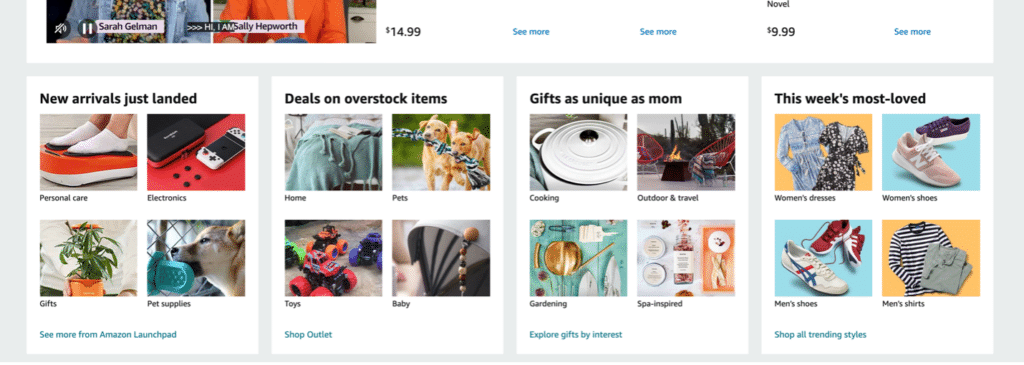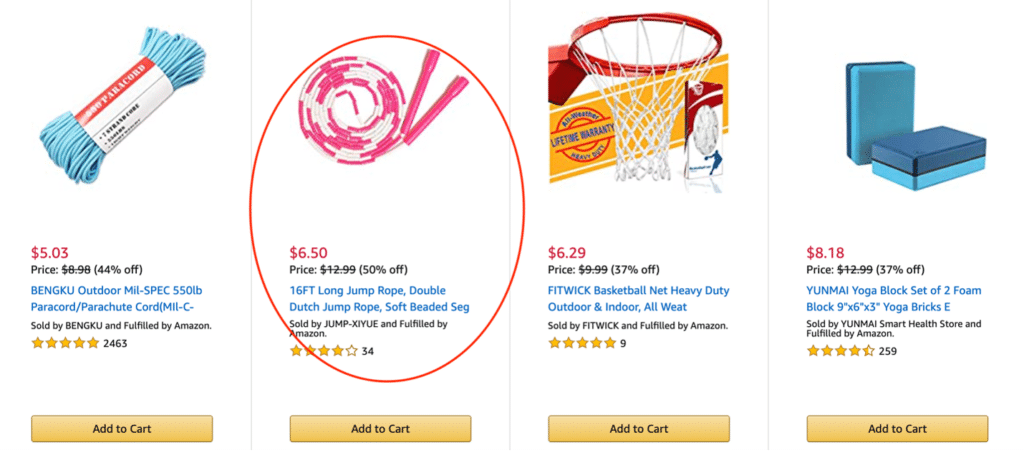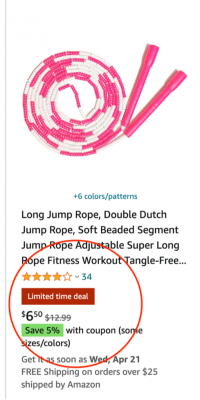How Amazon Can Help You Move Your Overstocked Products
Over the last 4 years, I have developed some very good relationships with Chinese factory owners. They produce glass, clothes, electronics, metals, rugs, blankets, and more! Evert time I visit, we play basketball and their dream is to visit the United States to watch Lebron or Steph Curry. So when I invited a few of them to come visit me in Salt Lake City, I planned a sweet itinerary that included snowmobiling, Yellowstone, a Jazz game, a Lakers game, and a gun range.
As if they hadn’t read the amazing planning or noticed the strings I pulled to pack all these events into a single trip, the first question they asked was “Will we have time to shop at the outlet stores?” As it turns out, Covid ravaged the world and all their flights were cancelled and I was stuck going to the Jazz game and snowmobiling with my business partners instead. We were all disappointed!
I have never compared our local Park City Outlet shops to the outlets pages on Amazon. But guess what, the outlets are awesome and effective at helping you both clear out old or slow-moving inventory while improving your sale rank for eligible ASINs.
Your shopping behaviors may be different than mine – I like to get in get out with the item I’ve already researched. If you are looking for a go-to place for customers to shop for highly discounted, overstocked, and clearance brand and off-brand products, then you should look for the outlet store link on Amazon’s home page:

You’re right, it doesn’t say “Outlet Deals” but your outlet-eligible items will appear under the box with the title “Deals on overstock items” and the link “Shop Outlet” at the bottom.
How do Outlet Deals Work?
Want some good news? There are no additional fees for using Outlet – yay! Standard fulfillment and referral fees are still applied, however. To find out which of your ASINs are eligible for outlet deals, you can review them in the Manage Excess Inventory tool and create deals to be featured on the Outlet page once approved by Amazon. The Outlet store doesn’t allow you to choose just any ASIN you want to promote, but the ones Amazon deems are a good fit to help your inventory sell-through. They require a minimum 20% discount via the “Create Outlet Deal” option on the “Manage Excess Inventory” page.

To participate, a seller account must have a rating of at least 3.5 stars and your ASINs must meet the following criteria to qualify for the Outlet program:
- Have inventory in Amazon fulfillment centers for at least 90 days
- Have more than 10 units of inventory on-hand
- Have a sales history
- Be in new condition
- Have a product rating of at least 3 stars or no reviews
- Not currently enrolled in Subscribe & Save
- Not currently enrolled in another Deal promotion such as Lightning Deals
- Not on Outlet deals in the past 60 days
- Comply with Amazon’s customer product reviews policiesand price policies.
Even after being deemed eligible, amazon still reviews your Outlet request and may or may not approve the outlet deal.
You can stack coupons on top of the outlet deals, though it may not make sense unless you want to be super aggressive. Since you’re already discounting you should make sure you don’t accidentally have a coupon and an outlet deal running at the same time.
There are two different types of outlet titles. An “Outlet Deal” is a product that is marked down at least 30% and will be advertised for two weeks starting on the next deal cycle. An “Outlet Sale” is a discount lower than 30% and has a lower priority than the Outlet Deals. Don’t forget that Bezos loves low prices more than my Chinese factory owners love watching the NBA!
Keep in mind that the Outlet section of Amazon is not the same as the “Amazon Warehouse Deals.” They don’t sell used or refurbished items in the Outlets. These are all new and fulfilled by Amazon (FBA) sold by 3rd parry sellers.
Random Case Study
For a case study example, I clicked into page two of the sports and outdoors section of the Outlet pages and chose a random product to see if Outlets has helped. I chose a long jump rope with an original price of $12.99 and a sales rank of around 80,000.

An aggressive 50% discount should move more inventory, but you can find listings up to 70% off in Outlets. Seems like most of the listing I’ve seen are between 35% and 50% off. I was also curious how the deals are promoted outside of the Outlet pages and what a normal search result looks like when a consumer runs into that listing. To my surprise it came up with a red box advertisement that said “Limited time deal.” This made sense since the outlet deals are promoted for two-week period. I like that the red promo box grabs consumers’ attention as you can see here:

So how are sales going since the jump rope started the Outlet deal? From the chart below, it looks like as soon as they were listed on the Outlet page with the new $6.50 price point, their sales rank dropped to around 18,000 down from 80,0000 – a drastic improvement! I’d say Outlet is producing the desired effects here.

Which Sellers Should Use Outlet?
If your IPI score is low and you’re having a hard time raising that number so your storage space limits don’t get reduced (if you don’t meet the sell-through with an IPI of 450, Amazon will shrink your eligible storage space), then you might consider Outlets. You should also keep tabs on those nasty short and long term storage fees (LTSF) that can add up on your portfolio’s sleepy products.
If your products qualify, you might want to experiment with this program to raise your keyword ranking or to re-launch a once-awesome selling item. Hope this helps as you think about what to do with your excess inventory. Please leave a comment or reach out to info@revstep.com if you have any questions we can help you with. Happy Selling!
